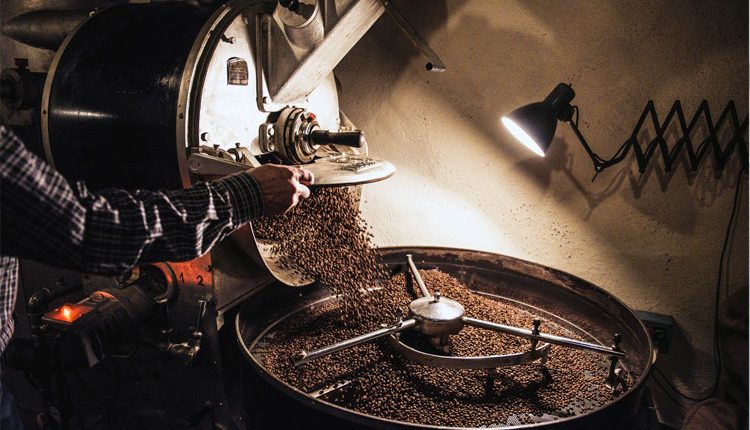Safety and quality are typically top priorities for food and beverage manufacturers. However, even the largest companies can struggle with safety and quality control processes, and recalls are becoming more common.
New automation strategies — which may leverage technology like IoT devices, AI and robots — are helping to make food and beverage manufacturing processes safer, more efficient and more likely to meet quality standards.
Most manufacturers can apply these technologies to help streamline essential processes, including cleaning, preparing raw materials and packaging. These are the key benefits of automation technology in the food and beverage industry that companies would be wise to adopt.
1. Reduce the Potential for Injury
One of the most significant advantages of automation is its ability to minimize the exposure of human workers to risk. Food and beverage manufacturing employees face several safety risks — including heavy equipment, blades, chemical hazards and the potential for repetitive stress injuries.
Automation can reduce the potential impact of these risks by handling work that falls under one of the “three D’s of industry” — labor that is dull, dirty or dangerous.
For example, butchers in meat processing facilities face obvious risks. Tools needed for tasks like beef carcass butchering are dangerous, even with safety controls. The cold environment necessary for meat processing also poses additional dangers. Without the right PPE, workers may be at risk of cold stress and more serious injuries.
Robots can help reduce the need for labor in dangerous working conditions or manage hazardous tasks entirely on their own. Robot butchers, like those adopted by Tyson during the COVID-19 pandemic, take advantage of modern robotics and machine learning technology to automate tasks that have typically required experienced facility workers.
The robots improved safety by assisting with or completing these tasks and freeing up workers for more engaging jobs elsewhere in the facility. In some cases, employees were protected from the dangers of sharp tools and health risks associated with cold temperatures.
IoT devices and automated safety solutions can offer additional safety controls that make oversight easier for managers of these facilities. Smart temperature monitors, combined with cloud-based data dashboards, can provide instant information and condition-based notifications using temperature data from inside a meat processing plant.
These monitors can provide managers with better information on which workers may be exposed to dangerous temperatures and will require PPE using real-time data from inside the facility.
2. Prevent Quality Issues Before They Happen With Predictive analytics
Over time, data from IoT sensors, robots and other sources of information can provide the foundation for predictive analytic tools. These systems utilize artificial intelligence to predict potential quality and safety issues.
Training an AI algorithm on existing data can accurately forecast which processes may limit product quality or introduce safety risks. This allows managers to take action before these potential issues become a reality. Industry researchers have already used the technology to track foodborne illness and improve the efficiency of health and safety inspections.
The technology could also shortly be used to improve the shelf life of products, detect and prevent contamination, or automatically evaluate food quality.
Each of these use-cases could significantly improve the quality and safety of products while also streamlining existing quality assurance processes.
3. Leverage Automated Standard Operating Procedures (SOPs) to Minimize Inconsistencies
Standard operating procedures are essential for ensuring employees follow recipes and comply with site safety and quality assurance procedures.
Modern technology enables businesses to automate their SOPs, allowing them to replace physical documentation with interactive digital solutions that monitor compliance and make following procedures much easier.
Automated SOP solutions walk an employee through standardized working processes. They alert them when they fail to complete a step, do something incorrectly, perform unnecessary work or do things in the incorrect order.
These solutions can help ensure employees follow SOPs by reducing the risk of error and providing information as needed.
A SOP automation solution can be a powerful tool for businesses that have struggled with ensuring employee compliance. The right solution allows managers to more easily ensure workers follow SOPs closely and efficiently.
4. Improve Business Traceability and Controls With the Internet of Things
Traceability initiatives have become increasingly important for manufacturers, who often need to comply with retailer programs or stand to benefit from providing additional information on their products to consumers.
However, establishing the history of a product can be difficult — especially for larger businesses or companies with complex supply chains. Automation can help streamline traceability, making it easier to track products, raw materials and the movement of other items. IoT tracking devices, sometimes combined with AI algorithms, are already helping businesses more effectively establish the provenance of goods they ship or use in manufacturing.
The right combination of devices and tracking solutions can provide moment-to-moment information on where a product was at a given time — and potentially the conditions it was stored or transported in. This information can allow businesses to more accurately develop a timeline of the item’s movement through the supply chain, from ingredients to manufacturing to purchase.
Additional devices combined with manufacturing execution systems can enable tracking products through the manufacturing process. This type of solution can provide manufacturers with the information needed to identify each item’s ingredients and quality characteristics or more effectively control material flow in the facility.
The Quality and Safety Benefits of Automation in Food and Beverage Manufacturing
New automation solutions for the food and beverage industry leverage Industry 4.0 technology to provide further benefits and automate tasks that were previously performed by human workers.
AI, the Internet of Things and robots are particularly useful for manufacturers. Businesses have leveraged these technologies to streamline operations and make workers safer. IoT devices, in particular, could be especially useful in supporting companies that want to improve data collection, traceability and SOP compliance initiatives. Manufacturers should implement automation to boost worker safety, improve the quality of products and better their bottom lines.


